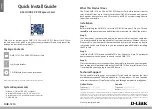
Initialization
Initializing the chip requires knowledge of the UART's register set. The first step is to set the baud rate
divisor. You do this by first setting the DLAB (Divisor Latch Access Bit) high. This bit is Bit 7 at Base
A3. In C code, the call would be:
outportb(BASEADDR
+3,0x80);
You then load the divisor into Base A0 (low byte) and Base A1 (high byte). The following
equation defines the relationship between baud rate and divisor:
desired baud rate = (UART clock frequency) / (32 * divisor)
On the card, the UART clock frequency is 1.8432 MHz. The following is a table for the popular divisor
frequencies:
Baud Rate
Divisor
Max Diff. Cable Length *
115200 1
2200
ft
57600 2
4000
ft
38400 3
4000
ft
28800 4
4000
ft
19200 6
4000
ft
14400 8
4000
ft
9600 12 4000
ft
4800 24 4000
ft
2400 48 4000
ft
1200 96 4000
ft
*These are theoretical maximums based on typical conditions and good quality cables based on the EIA 485 and EIA 422 standard
for balanced differential drivers. RS-232 communication lines have a maximum length of 50 feet, regardless of speed.
Table 5-1:
Baud Rate Divisor Values
In C, the code to set the chip to 9600 baud is:
outportb(BASEADDR,
0x0C);
outportb(BASEADDR
+1,0);
The second initializing step is to set the Line Control Register at Base A3. This register defines
word length, stop bits, parity, and the DLAB.
Bits 0 and 1 control word length and allow word lengths from 5 to 8 bits. Bit settings are extracted by
subtracting 5 from the desired word length.
Bit 2 determines the number of stop bits. There can be either one or two stop bits. If Bit 2 is set to 0, there
will be one stop bit. If Bit 2 is set to 1, there will be two stop bits.
Bits 3 through 6 control parity and break enable. They are not commonly used for communications and
should be set to zeroes.
Manual PCI-COM-422/4
15






































